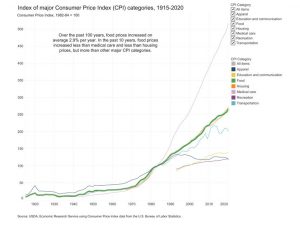A week or two ago, I caught an interview with the Department of Government Effectiveness (DOGE) team — and I haven’t stopped thinking about it since.
Some of the numbers they shared about the National Institutes of Health (NIH) were staggering. NIH, home to some of the world’s most brilliant scientific minds, is also home to 27 different institutes, each focused on a specific disease or body system. That makes sense — science is complex, and specialization matters. But here’s where it gets messy.
NIH also has 700 different IT systems. That’s not a typo. Seven hundred. That works out to one platform for every 29 employees. And the kicker? These systems don’t talk to each other. Not only that — each of the 27 centers has its own Chief Information Officer, many of whom aren’t even technical professionals.
It’s like each floor of a hospital running its own private network, with no elevators or stairways to connect them. Imagine how much slower everything would be — duplicating records, missing critical connections, reinventing the wheel at every turn.
Sadly, this isn’t unusual. During my time working with the Department of Agriculture, we struggled with a similar issue. Two major agencies — the Farm Service Administration (FMA) and the Risk Management Agency (RMA) — were using totally separate data systems. Farmers had to report the exact same acreage information twice every year just to stay compliant and insured. One system was so outdated it had them virtually “drawing” their fields on a digital map. The other allowed for automated data uploads. But because the systems weren’t integrated, farmers had to do double the work.
We tried to fix it. Secretary Sonny Perdue pushed hard during the Trump administration to merge the systems and make life easier for farmers. But change was slow. One of the biggest barriers? Internal resistance. Consolidating meant fewer IT departments, which meant fewer government jobs. The employee union fought the change, even though keeping both systems was costing taxpayers and frustrating farmers.
Back to NIH: if we struggled to harmonize two systems at USDA, just imagine what it would take to tackle 700.
And here’s the thing — the problem didn’t start with bad intentions. Over the years, Congress created new initiatives, programs, and research centers, often standing them up independently from what already existed. Integration was kicked down the road, considered too complicated or costly. Now? It’s both — and the price of doing nothing is rising fast.
The result is a tangle of systems, data silos, and inefficiencies — all at the very institutions we count on to innovate, protect, and heal.
Which brings us back to DOGE — the Department of Government Effectiveness. They’re doing something many have tried and few have accomplished: naming the problem out loud. Without their work, most of us wouldn’t even know this was happening. And without that awareness, there’s no real hope for change.
But here’s the rub: transparency isn’t the same as transformation. DOGE can show us the problem. But fixing it? That’s going to take real leadership — the kind willing to challenge deeply embedded systems and incentives.
It’s not about blaming anyone. It’s about finally choosing to do the hard, unglamorous work of making government work better — not just for the people on the inside, but for the people it’s meant to serve.
DOGE gave us the flashlight. Now someone has to start clearing the path.



